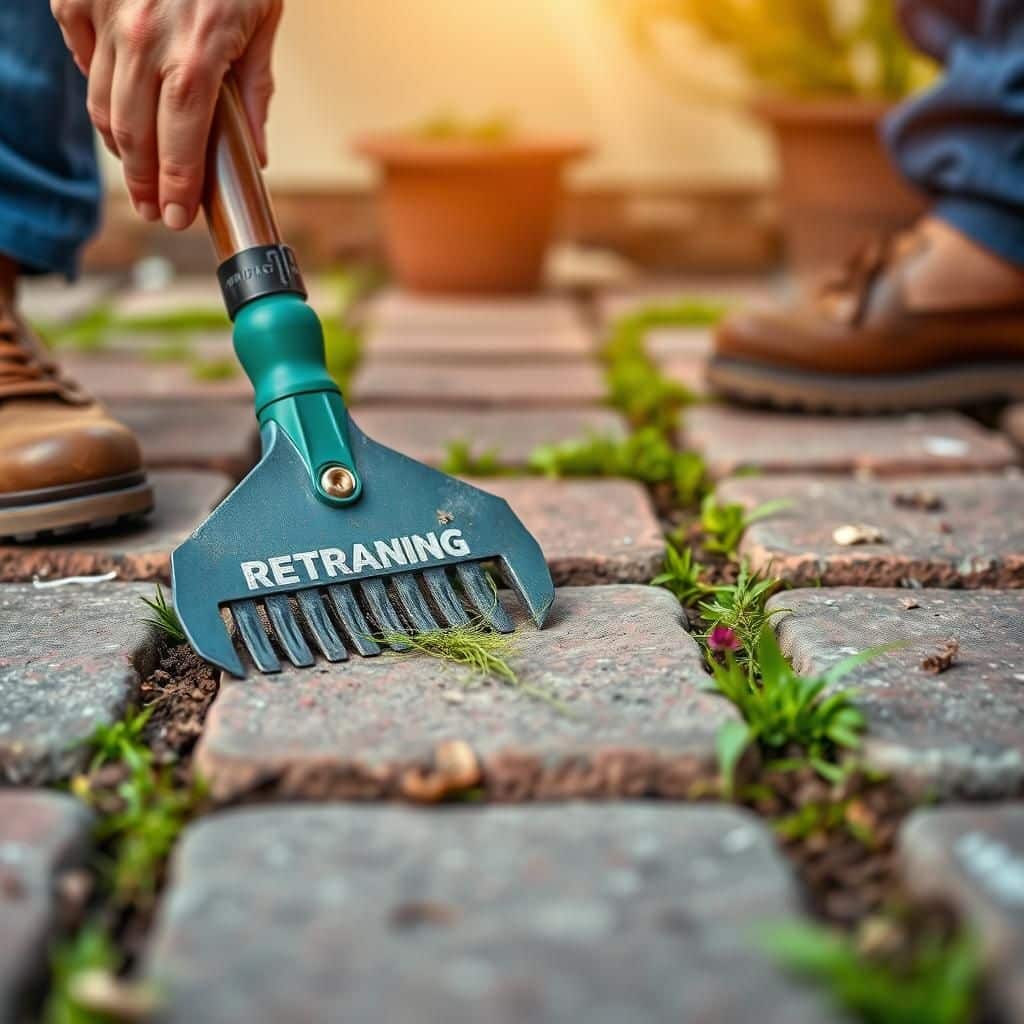“Ultimate Guide: How to Remove Weeds from Pavers Effectively”

Maintaining the beauty and functionality of your outdoor spaces can be challenging, especially when pesky weeds start to emerge between pavers. These unwelcome intruders not only detract from the aesthetic appeal of your patio or walkway but can also compromise the structural integrity of your hardscapes. In this ultimate guide, we will explore effective and sustainable methods for removing weeds from pavers, ensuring that your outdoor living areas remain pristine and inviting. From natural remedies to professional solutions, you’ll discover the best practices to keep your pavers free of unwanted growth and enhance the overall look of your landscape.
Effective Methods for Removing Weeds from Pavers
To efficiently remove weeds from pavers, you can try a variety of effective techniques that cater to different preferences and situations. One popular method involves using a mixture of water and vinegar, where the acidity of the vinegar helps to kill weeds while being gentle on the surrounding plants and soil; simply spray the solution onto the weed-infested areas. Alternatively, you can use boiling water, which will scorch the weeds instantly, making it a quick and chemical-free solution. Regular maintenance, such as using a broom to sweep away debris and applying a sealant, can also help prevent the growth of new weeds in the future, promoting the longevity of your pavers.
Using Vinegar Solution
A vinegar solution is a natural herbicide that can effectively eliminate weeds between pavers due to its high acidity. To create this remedy, mix equal parts of white vinegar and water in a spray bottle, and apply it directly onto the affected areas. It's best to perform this task on a sunny day, as the heat will enhance the effectiveness of the vinegar, causing the weeds to wilt and die within hours. However, be cautious when using this method around desirable plants, as vinegar can negatively affect them as well if it comes into contact with their leaves.
Boiling Water Technique
Pouring boiling water over weeds is a simple and effective method that can be performed with minimal effort. When the boiling water comes into contact with the weeds, it disrupts their cellular structure, killing them almost instantly. This technique is particularly great for pavers that are heavily infested, as it requires no chemicals and is completely eco-friendly. After application, ensure to keep children and pets away from the treated area to prevent burns and injuries.
Utilizing a Pressure Washer
A pressure washer can also be an efficient tool for maintaining clean pavers and removing stubborn weeds. By directing a high-pressure spray of water at the affected areas, you can dislodge weeds, along with any dirt or debris that may harbor weed seeds. Regular use of a pressure washer not only helps in weed removal but also keeps your pavers looking fresh and clean. However, caution is advised to avoid damaging the pavers' surface with the high-pressure stream.
Hand Pulling Weeds
The most straightforward method for removing weeds is to simply pull them out by hand. This approach allows you to ensure that you’re removing the entire root, which is crucial for preventing the weeds from regrowing. It’s best to pull weeds after a rain, as the soil is softer and makes it easier to retrieve them completely. Always wear gardening gloves to protect your hands and consider doing this periodically to keep your pavers clean.
See also:
Using Commercial Herbicides
If the weed problem is severe, investing in commercial herbicides specifically designed for pavement applications can be a viable solution. These products contain powerful chemicals that effectively target and eliminate various types of weeds. It's important to follow the manufacturer's instructions carefully to ensure safety and efficacy, including recommended application times and protective measures. This method can provide quicker results compared to natural alternatives but may involve environmental considerations.
| Method | Effectiveness | Eco-Friendly | Time Required |
|---|---|---|---|
| Vinegar Solution | Moderate | Yes | Minutes |
| Boiling Water | High | Yes | Minutes |
| Pressure Washer | High | No | 30 Minutes |
| Hand Pulling | High | Yes | Variable |
| Commercial Herbicides | Very High | No | Minutes to Hours |
What is the best tool for removing weeds between pavers?

The best tool for removing weeds between pavers is generally considered to be a weeding tool or garden hoe specifically designed for this purpose. These tools allow for precise control and effective removal of weeds from tight spaces without damaging the surrounding pavers. Additionally, the choice of the best tool may depend on personal preferences and the extent of the weed problem.
Types of Weeding Tools
Different types of weeding tools can be used to effectively manage weeds between pavers. Here are some popular options:
- Hand-held Weeding Tool: These are small, easy to maneuver tools ideal for precision work.
- Garden Hoe: A traditional hoe can be effective for larger areas, allowing you to dig out weeds efficiently.
- Stainless Steel Weeding Fork: This tool is great for loosening soil and uprooting stubborn weeds.
Electric Weeders
For those who prefer a quick and less labor-intensive option, an electric weeder might be the best choice. These tools utilize heat to kill the weeds and make it easier to remove them.
- Heat Weeder: This type emits hot air to destroy weeds, eliminating the need for manual removal.
- Electric Weed Remover: Some variations are designed to extract weeds from the roots using electricity.
- Convenience: Electric models save time and effort, making them suitable for larger areas with persistent weed issues.
Preventative Measures
In addition to using the right tools, taking preventative measures can significantly reduce the growth of weeds between pavers.
See also:
- Weed Barrier Fabric: Laying down fabric before installing pavers can help inhibit weed growth.
- Regular Maintenance: Regularly checking and removing weeds can prevent them from becoming a larger problem.
- Mulch Application: Applying mulch in the gaps can impede sunlight and suppress weed growth.
Considerations When Choosing a Tool
When selecting a tool for removing weeds between pavers, there are several factors to consider to ensure effectiveness.
- Size of the Weeds: Consider how entrenched the weeds are and choose a tool that can handle their size.
- Amount of Weeds: For larger weed infestations, tools that provide mechanical advantage may be necessary.
- Personal Comfort: Ensure the tool feels comfortable in your hands since you'll be using it repeatedly.
Maintenance of Weeding Tools
Proper maintenance of your weeding tools can extend their lifespan and ensure they function effectively.
- Cleaning After Use: Remove soil and debris to prevent rust and degradation.
- Sharpening Blades: Regularly sharpen any cutting edges to maintain efficiency.
- Storage: Store tools in a dry area to avoid moisture damage and rust.
Questions from Our Readers
How can I manually remove weeds from pavers?
To manually remove weeds from pavers, start by using a weed puller or some garden gloves to grip the base of the weeds and pull them out of the cracks. Make sure to extract the entire root to prevent them from growing back. After removal, it’s helpful to use a broom to clear any remaining debris and ensure the area is clean.
What is the best way to prevent weeds from growing between pavers?
To prevent weeds from growing between pavers, consider applying a polymeric sand or landscape fabric before laying the pavers, which can block weed growth. Regular maintenance, such as sweeping or using a blower, will help keep the area clear. Additionally, applying a weed barrier can significantly reduce the chances of weed emergence.
Are there natural solutions for killing weeds between pavers?
Yes, there are several natural solutions for killing weeds between pavers. A mixture of white vinegar and water can be sprayed directly on the weeds to kill them due to the acetic acid. Alternatively, boiling water can be poured on the weeds to provide an effective, chemical-free method of eradication.
How often should I check for weeds in my pavers?
You should check for weeds in your pavers at least once a month, especially during the growing season. This regular inspection allows you to catch any weeds early before they can establish a more robust root system. Immediate action can help maintain the appearance and integrity of your paver installation.
See also:

If you want to read more articles like “Ultimate Guide: How to Remove Weeds from Pavers Effectively”, we recommend you check out our Weeds category.
Leave a Reply
Related Articles